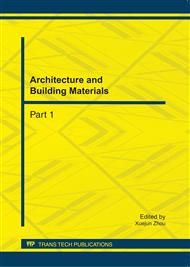[1]
Fucai Yang: The comprehensive utilization fly ash of coal-fired plants-Development of non fired and non steam-cured brick of fly ash, Environment and Exploitation, 1995, 10(3), pp.23-24
DOI: 10.1016/s0140-6701(97)81117-4
Google Scholar
[2]
Lifeng Meng, Juanrong Zheng: Investigation on the affecting factors of the strengths of geopolymer based on fly ash, Bulletin of the Chinese Ceramic Society, 2010, 29(3), pp.542-546
Google Scholar
[3]
Zhuoren Jin: Study on non fired and non steam-cured brick of fly ash, Environmental Engineering, 1995, 13(2), pp.57-60
Google Scholar
[4]
Hanjun Yan, Chanjuan Yan: Study on effect of raw materials on the quality of powder coal ash aerated concrete, Bulletin of the Chinese Ceramic Society, 2009, 28 (6) _5, pp.1317-1321
Google Scholar
[5]
Dehua Lu: The difference curing and application range between stem autoclave and cured brick of fly ash [J], Wall Materials Innovation & Energy Saving in Buildings, 2010(10), pp.34-35
Google Scholar
[6]
Jianguo Liang, Xiaojun Zeng, Feng Tang: Research on estimating model and compressive strength of non-burnt perforated brick masonry, Journal of Building Structures, v29, December 2008, pp.120-125
Google Scholar
[7]
Qixian Luo, J.H. Bungey: Using compression wave ultrasonic transducers to measure velocity of surface waves and dynamic modulus of elasticity for concrete, Hydro-Science and Engineering, 1996(3), pp.264-270
DOI: 10.1016/0950-0618(96)00003-7
Google Scholar
[8]
Taocong Sun, Ditao Niu, Chengfang Yuan et al: Study on relation between dynamic modulus of elasticity and velocity of ultrasonic sound and compressive strength for concrete, Concrete, 2010(4), pp.14-16
Google Scholar


